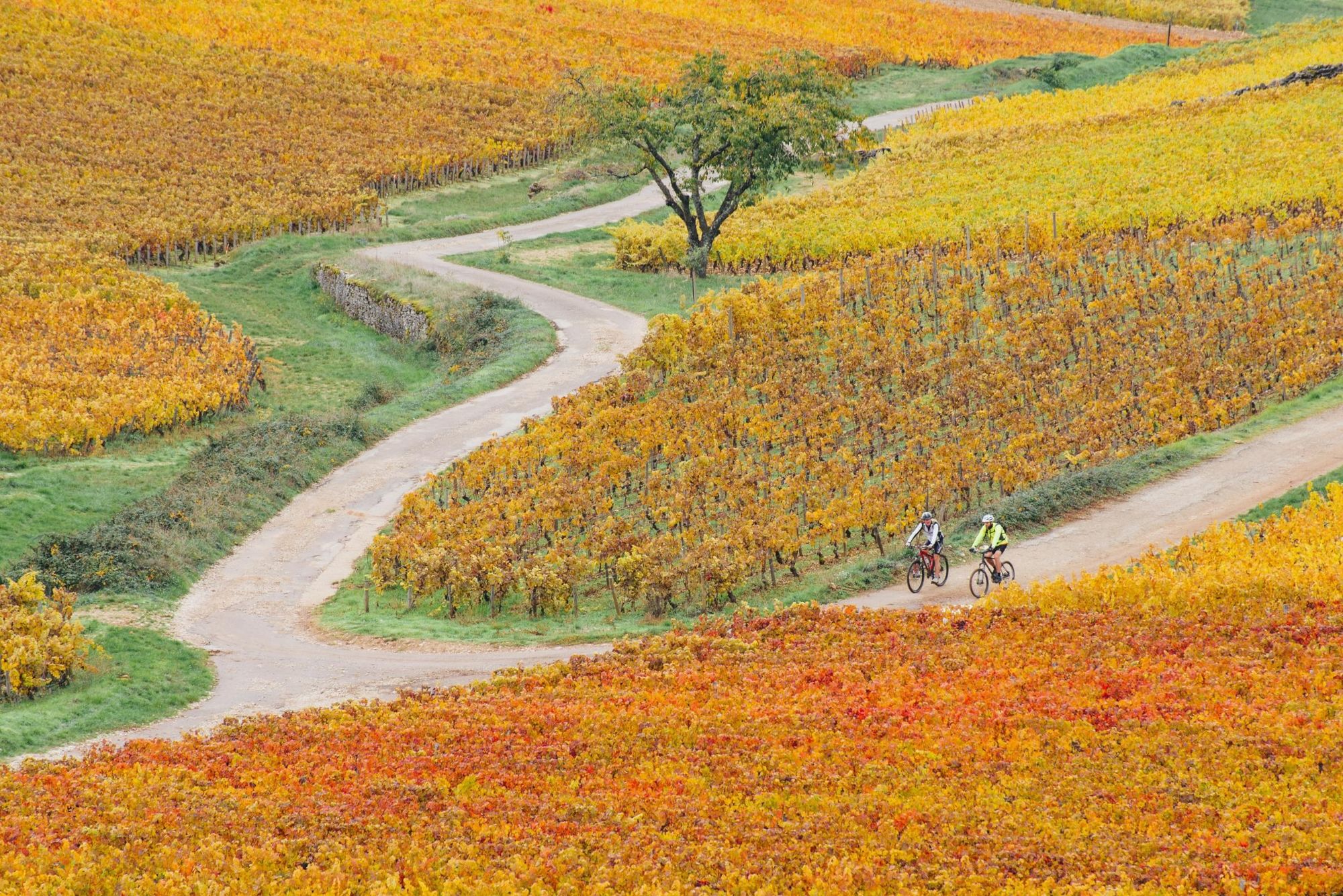The Voie des Vignes, or Vineyard Way, is a 44.7 mile (72km) route through Burgundy’s evocative wine country in central eastern France. It begins in the city of Dijon and ends in Santenay, a village known for its exceptional Pinot Noir and Chardonnay wines. On the way you’ll pass through a landscape of vineyards and rolling hills, passing châteaux and charming villages.
It’s a cycling variant of the Route des Grands Crus, which takes you through the Côte de Nuits and Côte de Beaune vineyards—visiting the same locations, albeit on quieter, more scenic backroads. The route epitomises slow travel, providing plenty of opportunities to indulge in Burgundy’s exquisite wines and cuisines.
It's the simplest way to explain Burgundy. This is where we produce the most prestigious wine in the world
“It's the simplest way to explain Burgundy. This is where we produce the most prestigious wine in the world,” says Florian Garcenot, who runs bike tours in the region. “Red Burgundy wine is made with Pinot Noir, and the white Burgundy wine with Chardonnay. Our Grand Cru vineyards, which is a designation of the highest quality, produce some of the most expensive wines in the world. They are also some of the best tasting.
“Burgundy is also a gastronomic paradise. People are never disappointed about the food. The chefs always compete to be the best, so there’s a real emphasis on quality. And there’s a lot of slow living here as well. In every village you have a market once a week. You have small cafes, shops and bakeries. You can stop every few kilometres for food. There’s a very nice, very French ambience in this region.”
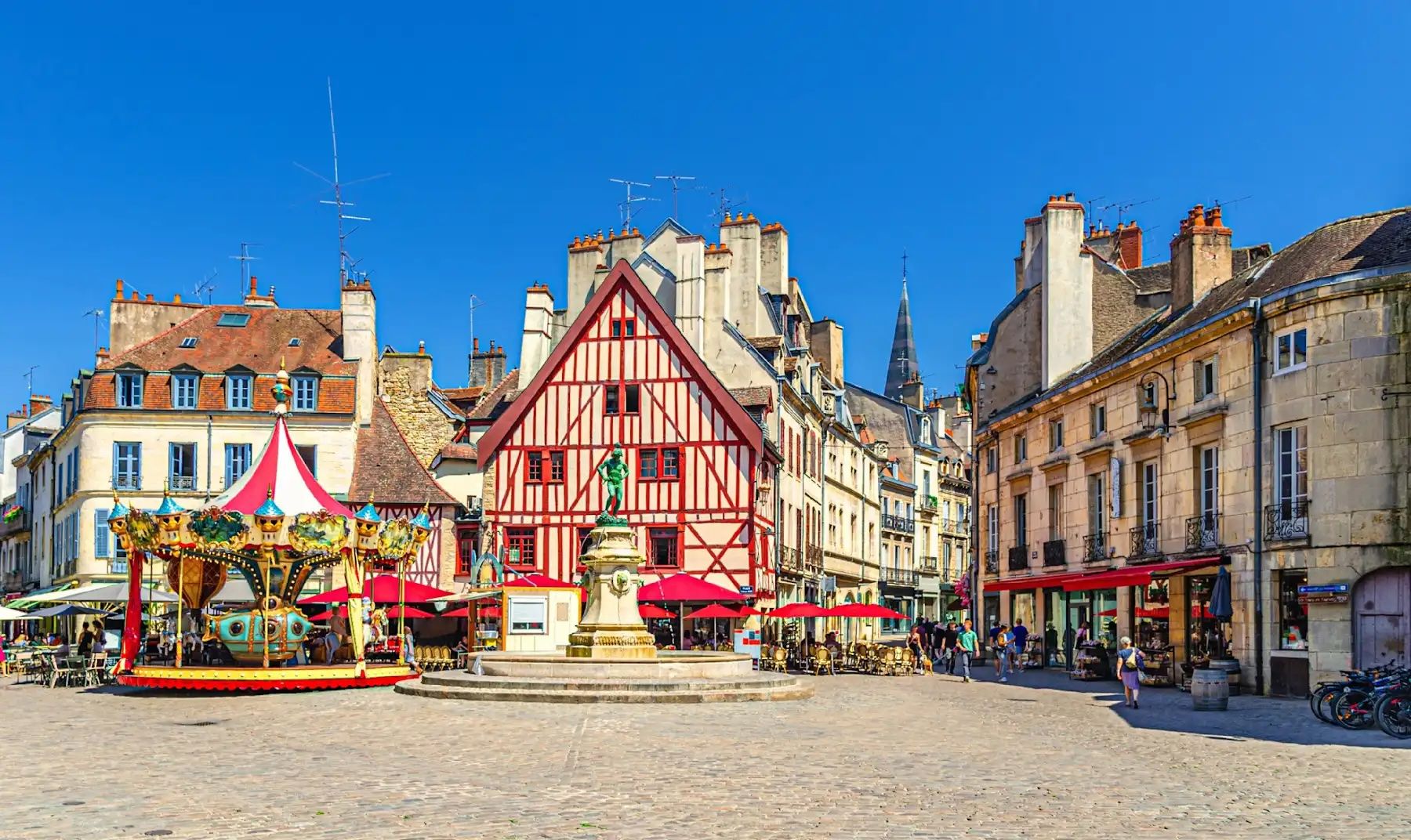
You’ll begin the ride in Dijon, which has a beautifully preserved Medieval centre, where timber-framed houses line cobbled streets and squares. The city is known for its Dijon mustard, and is considered a hotbed of gastronomy—visit the Cité de la Gastronomie exhibition space to find out more.
Cycle south out of the city on quiet side streets towards Marsannay-la-Côte, a small village considered the gateway to the Côte de Nuits, a wine-producing area lying along a limestone ridge that forms part of the Côte d’Or escarpment. The vineyards occupy its east and southeast facing slopes, many of which have a Grand Cru designation as the limestone-rich soil and consistent sunlight create the ideal terroir for Pinot Noir grapes. The low hills beyond them are carpeted with forest.
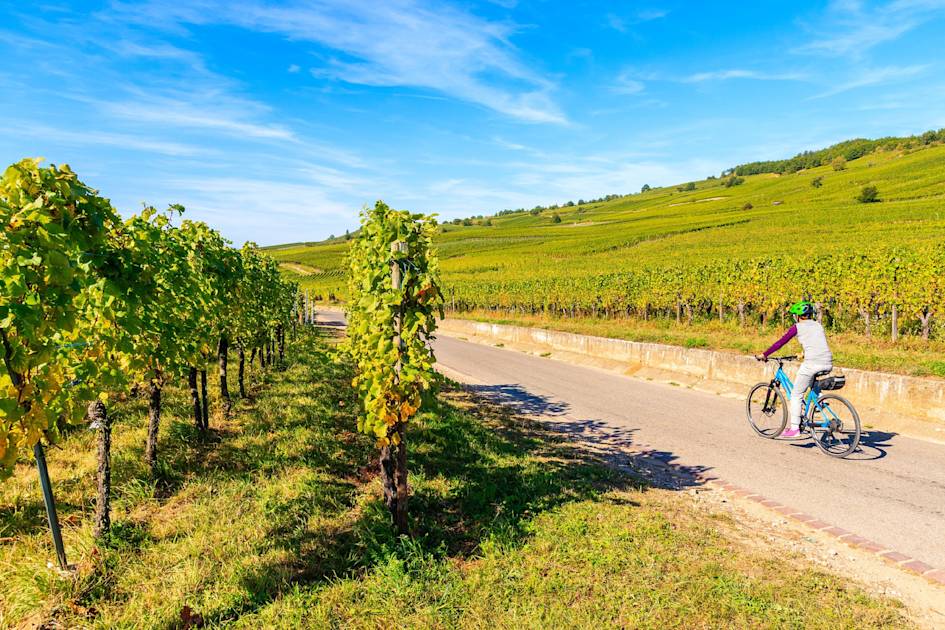
Shortly after leaving Marsannay-la-Côte, you’ll pass Château du Clos Vougeot, a medieval winery and château built by Cistercian monks in the 12th century—an impressive edifice rising from the low-lying vines. From here, it’s around 3.7 miles (6km) to the pretty town of Nuits-Saint-Georges, which was also founded by the Cistercian monks. As well as its wines, it’s also famous for its Crème de Cassis, a sweet blackcurrant liqueur grown from locally cultivated Noir de Bourgogne blackcurrants.
From Nuits-Saint-Georges, you’ll continue cycling through Burgundy’s wine country to the town of Beaune, which is a distance of 15.7 miles (23.4km).
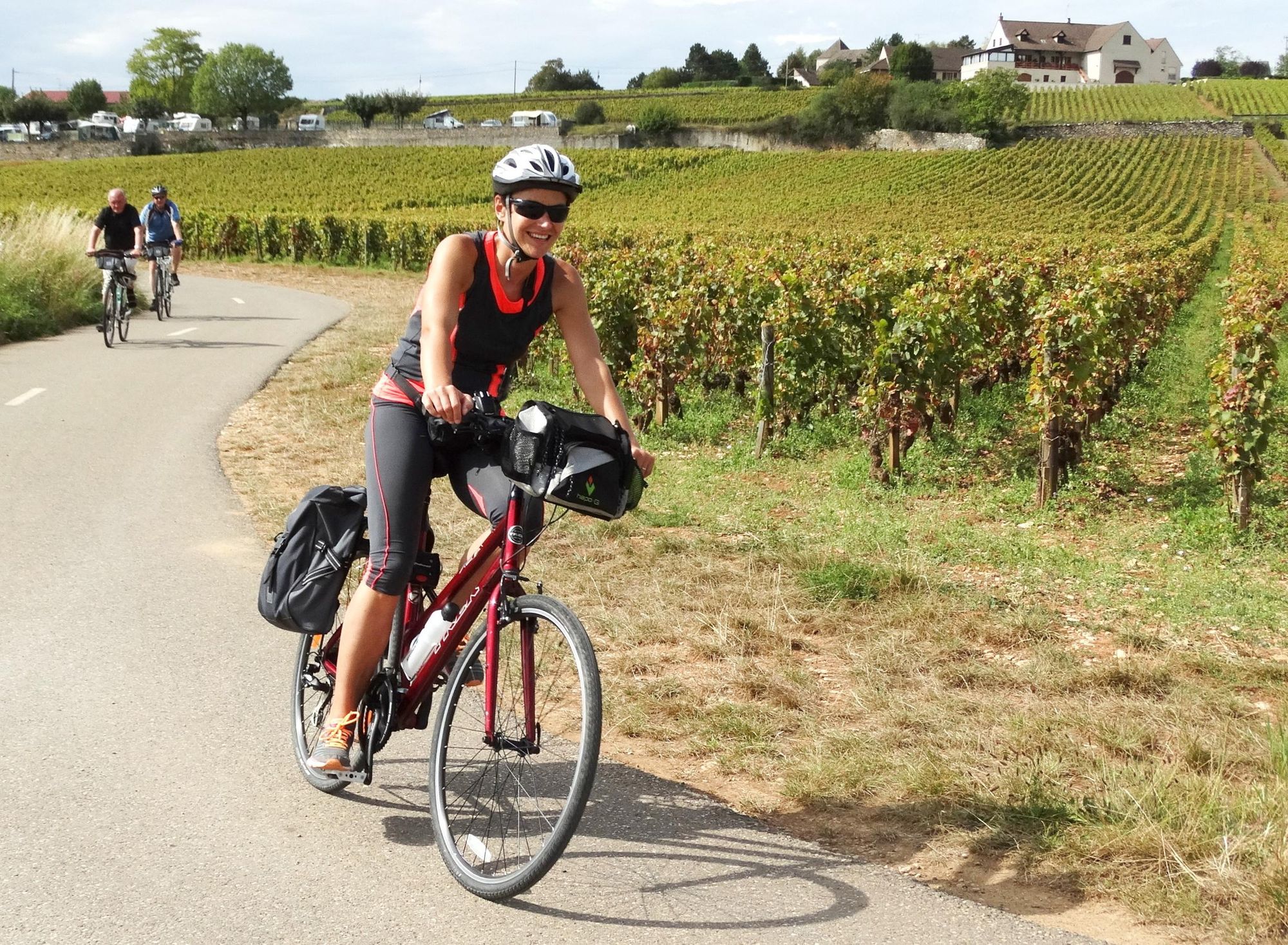
“All this area has been classified in 2015 by UNESCO, so it maintains a very authentic atmosphere,” Florian says. “The route passes from village to village. It's all asphalt, but really quiet with very low traffic. Vines grow on slopes; to get good quality, you need to have at least a bit of a hill. So it's never flat, it’s very rolling terrain.
“You cross the vineyards, and every five to 10 kilometres you arrive at a small village. Most of them are quite authentic, small and with all stone buildings. Some of them have 500 people, some of them are a bit bigger like Beaune, which is the main town in the middle of the Vineyard Way.”
Beaune is known as the ‘wine capital of Burgundy’, as it has long been the central marketplace for the region’s wines. The Hospices de Beaune, a 15th-century hospital with a striking geometric patterned-tile roof, is now home to a world-famous annual wine auction. Wander the winding streets and you’ll discover plenty of caves, or wine cellars, where you can taste locally produced vintages.
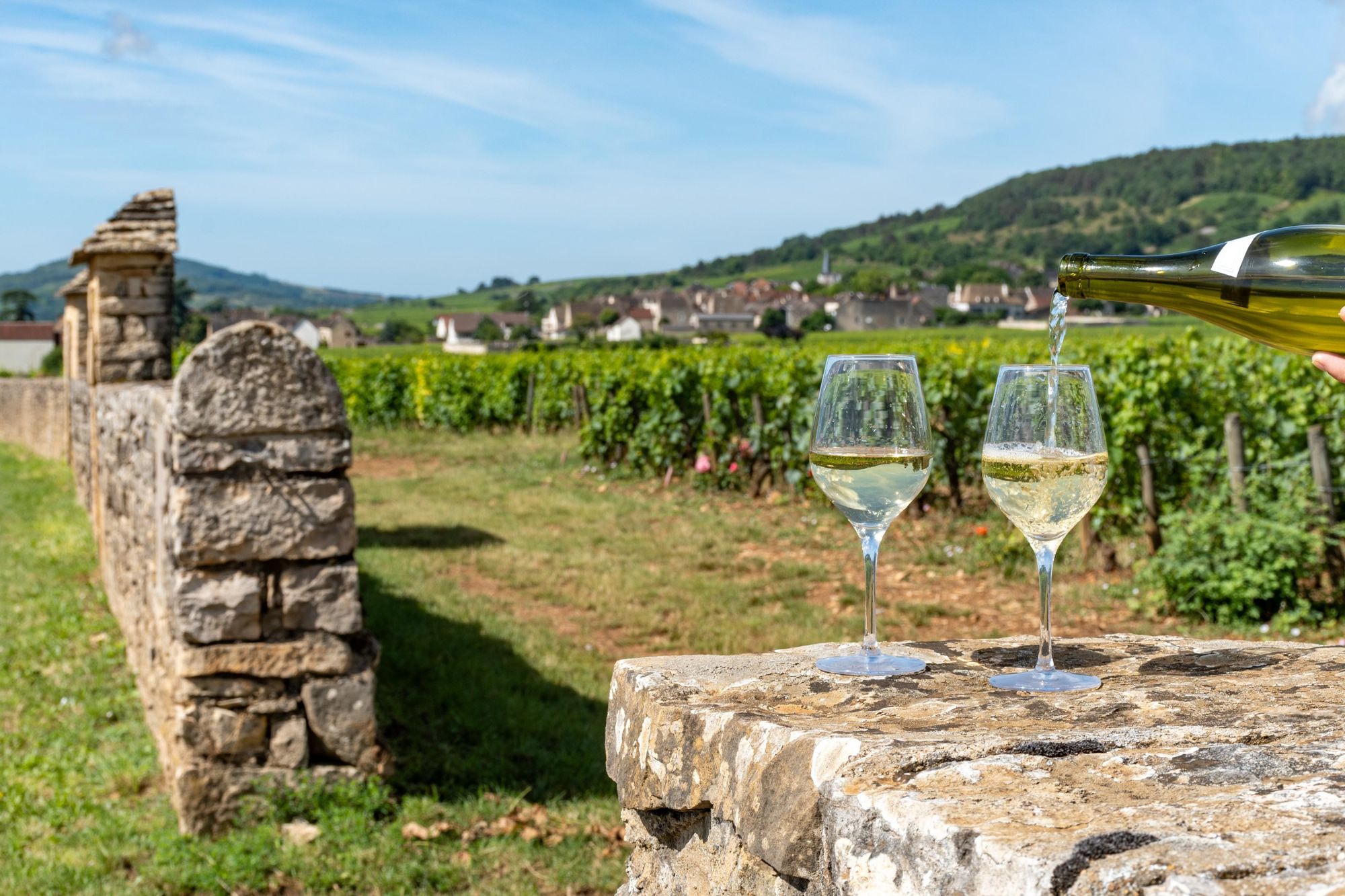
This is also a good town to indulge in Burgundy’s rich, flavourful cuisine—it even boasts a Michelin-starred restaurant, Le Carmin.
“A very well known dish you can always try is the beef bourguignon, a stew braised in Burgundy red wine,” Florian says. “Sometimes there's coq au vin, which is the rooster in the red wine sauce. Then oeufs en meurette, poached eggs with a red wine sauce. Then snails with parsley and garlic. Personally, that's something I really love. The gougères, savoury puff pastry. It’s very good to start the tasting with white wine.

“And the local cheese, of course. Cîteaux cheese, which is still produced by monks in the area. And then you have Époisses, which is a very stinky one, but the most creamy and most delicate in the mouth. It’s amazing with red wine—the taste of this strong cheese paired with a powerful red Burgundy pinot noir is a revelation.”
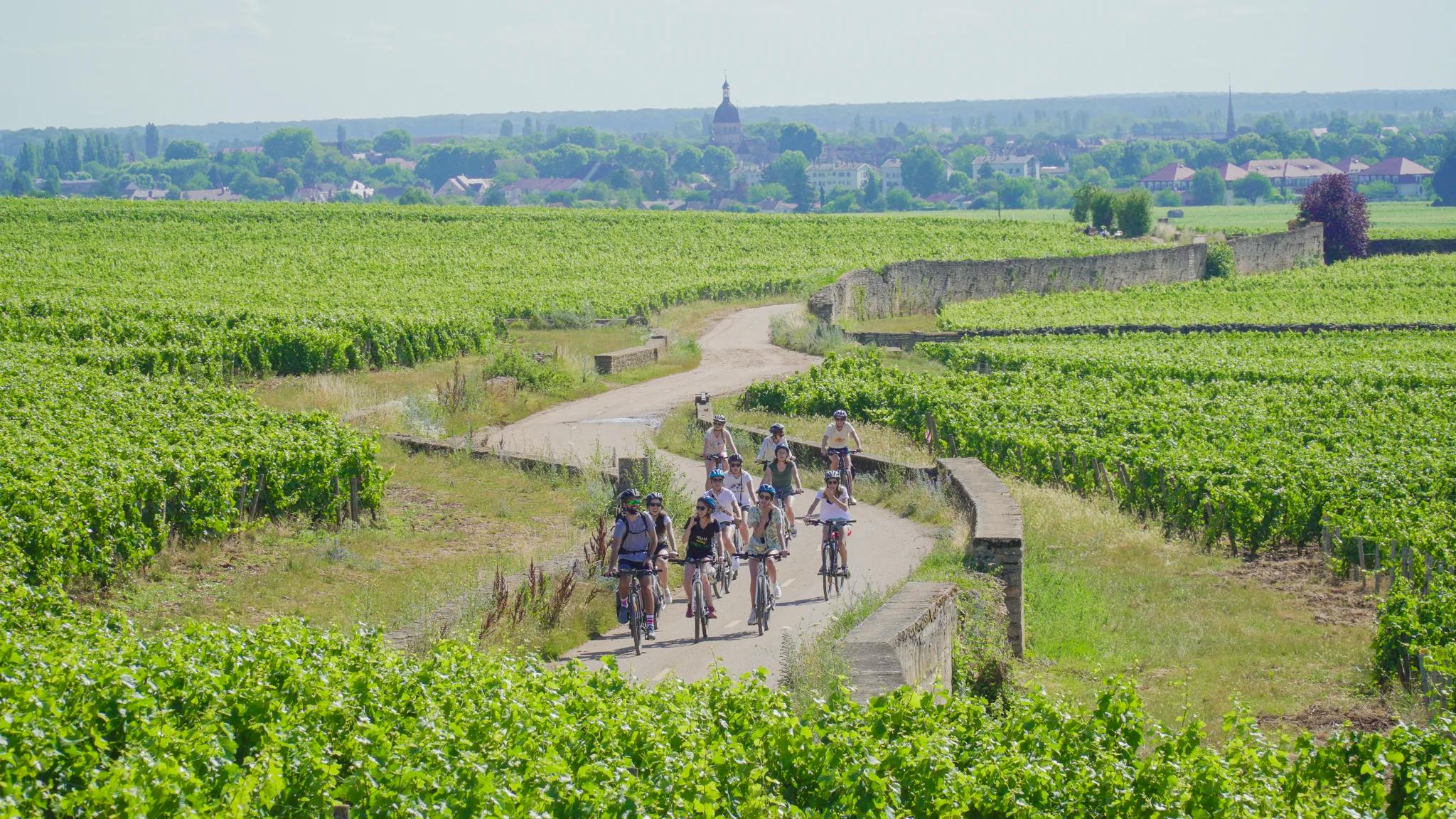
The final leg of the Vineyard Way takes you from Beaune through the back lanes and vineyards towards Santenay, which is a distance of 14.2 miles (23km). You’ll be cycling across the Côte de Beaune, the southern part of the Côte d’Or. Subtle differences in soil and climate mean that this area grows both Pinot Noir and Chardonnay grapes. It’s particularly well known for its white wines from small villages such as Meursault and Puligny-Montrachet.
The taste of this strong cheese paired with a powerful red Burgundy pinot noir is a revelation.
“Puligny-Montrachet is one of my favourite stops when I guide,” Florian says. “It’s a good stop because it's the capital of white wine. It's small, with maybe 300 or 400 people living there, but there's many little restaurants for the size of this village. So it's always pleasant to stop there for lunch or maybe a wine tasting.”
Even the most leisurely of cyclists won’t need long to complete the Voie des Vignes. It can be cycled in a day, although we recommend an overnight stop in Beaune so you have time to explore (and indulge). However, if you want to extend your cycling trip, there are plenty of different options, which will allow you to experience the diversity of landscapes in Burgundy outside of its vineyards.
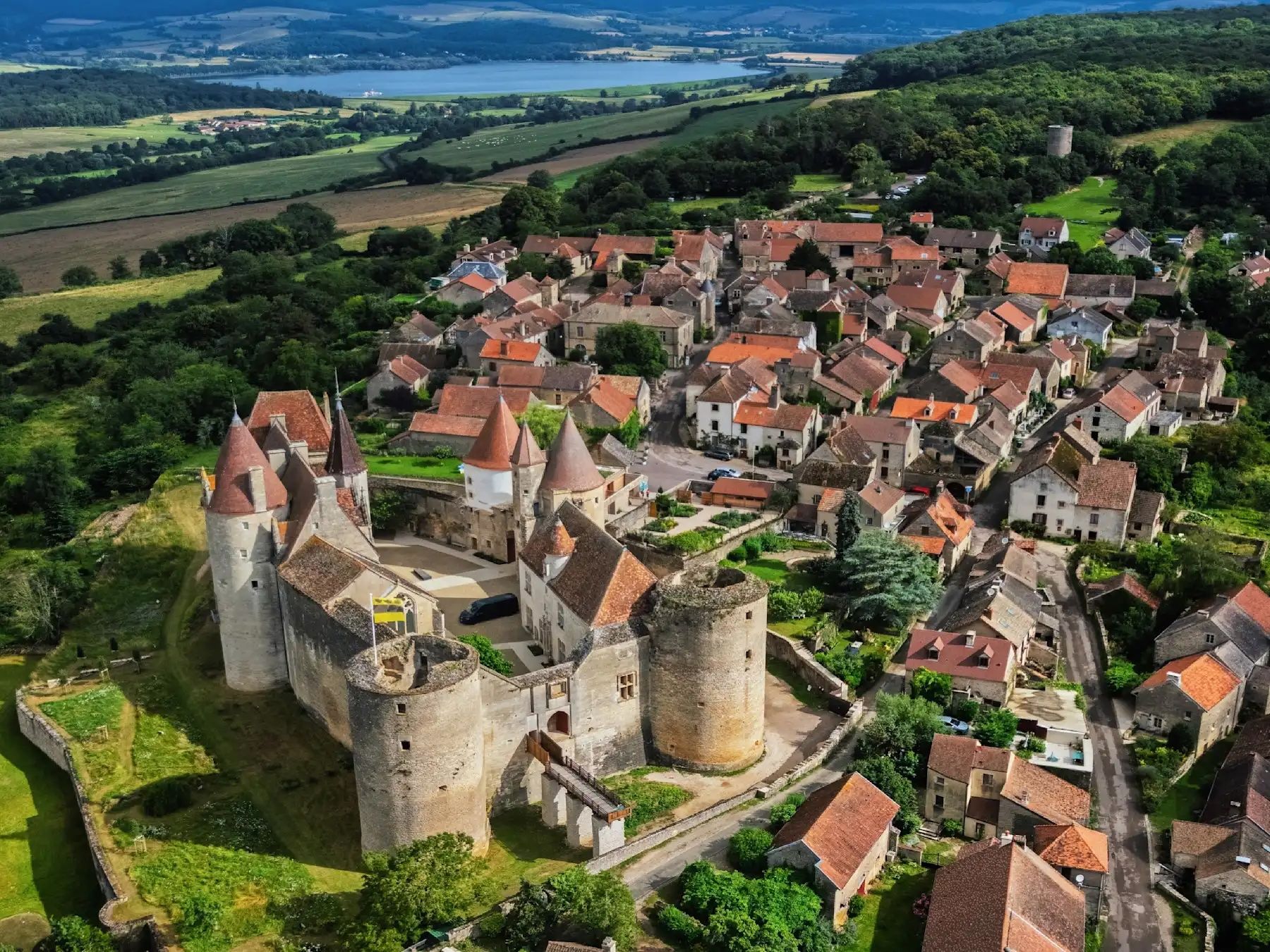
Florian recommends continuing south for 3.1 miles (5km) from Santenay to the hamlet of Chassey-le-Camp, a quiet village surrounded by rolling hills. From here, leave the vineyards and follow a trail through fields grazed by white Charolais cows, undulating hills and forests of the Auxois countryside to Châteauneuf-en-Auxois, a medieval hilltop village crowned by a château.
It's one of the most beautiful villages in France. You feel like it’s a great privilege to visit
“I really like arriving also at Châteauneuf-en-Auxois,” says Florian. “It's perched on a hill and the village dominates the area. So you have a wonderful view all around. When you look at it, it’s beautiful. It's like a fairy tale.
“Châteauneuf-en-Auxois is a medieval village and you have the real old ambience there because there are narrow streets, some little crêperies. The houses are old and built with stone. It's one of the most beautiful villages in France. You feel like it’s a great privilege to visit because you have local people, a few tourists, you have some services, but it's not crowded.”
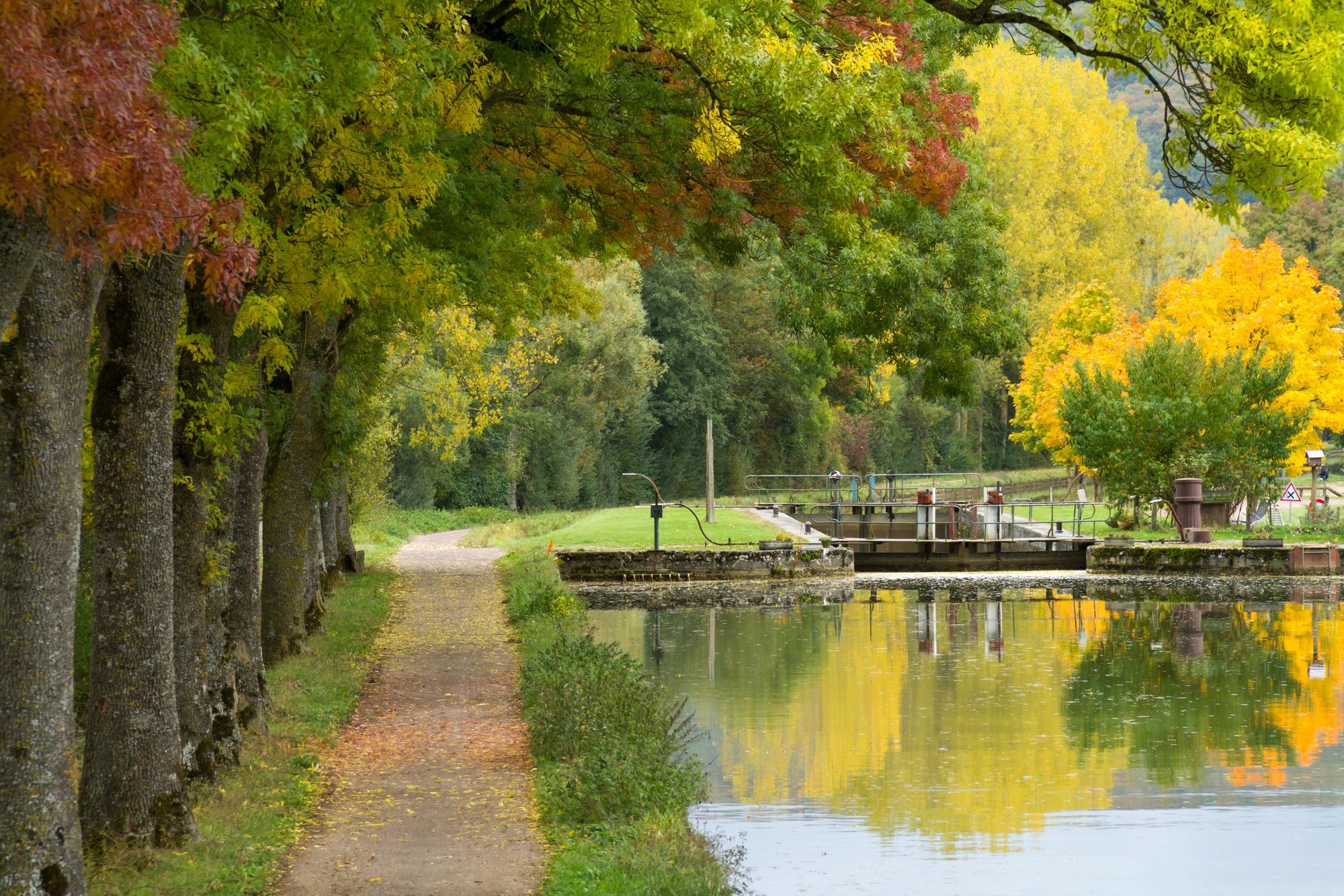
From Châteauneuf-en-Auxois you can follow a cycle path alongside the Canal de Bourgogne, which connects the Yonne and Saône rivers, all the way back to Burgundy.
“It's really a peaceful ride. There's no traffic at all, just a dedicated bike path following the canal,” Florian says. “You can also see the 200 to 300 year old locks, with little houses nearby. It’s a very natural, very idyllic environment.

“This is what’s so special about Burgundy. There are so many places in the world that are so Instagrammed at the moment, so people rush to travel there. Here it's so beautiful, so charming, but still without the crowds.”
You might visit Burgundy for the wine, but it’s the atmosphere that will captivate you. From leisurely lunches in timeworn villages to wine tastings surrounded by sun-dappled vineyards, this is slow living elevated to an art form.
Inspired? Cycle along the Vineyard Way and beyond, to Châteauneuf-en-Auxois, on our Cycle the Wine Trails of Burgundy adventure.


